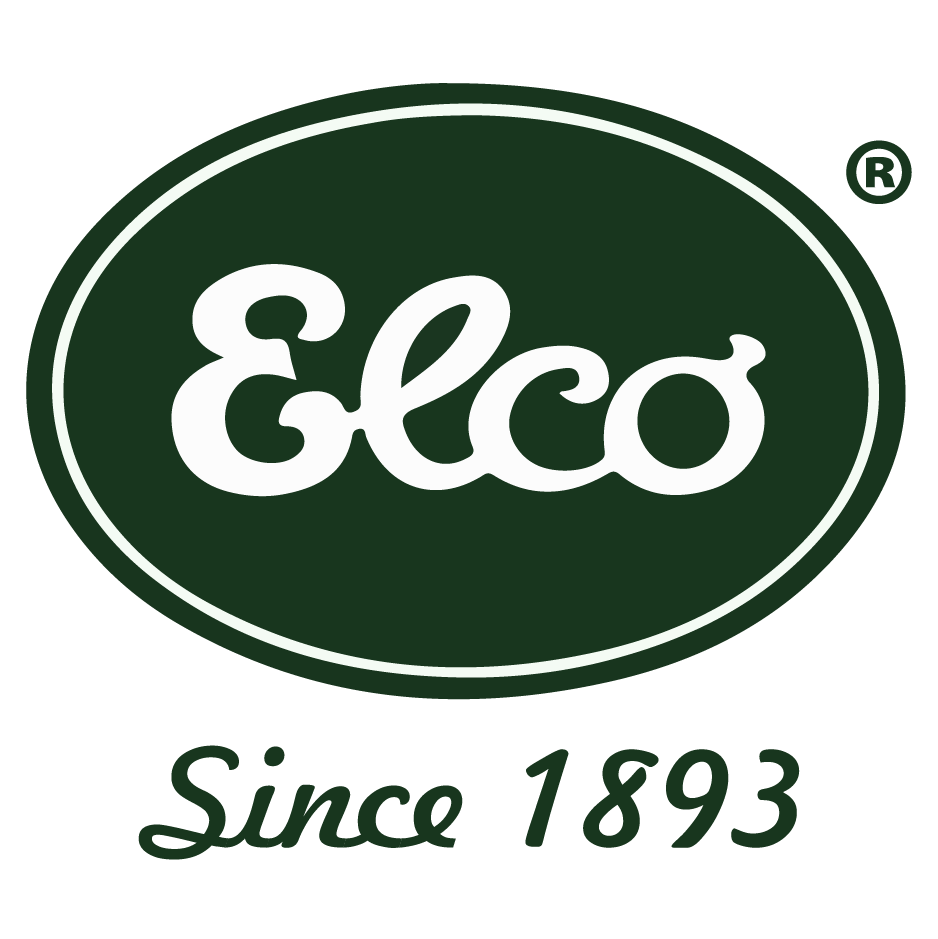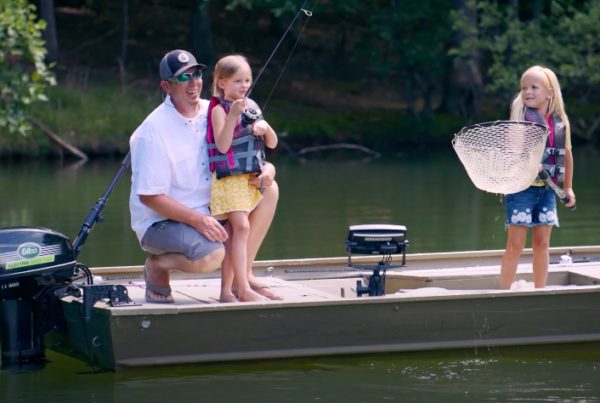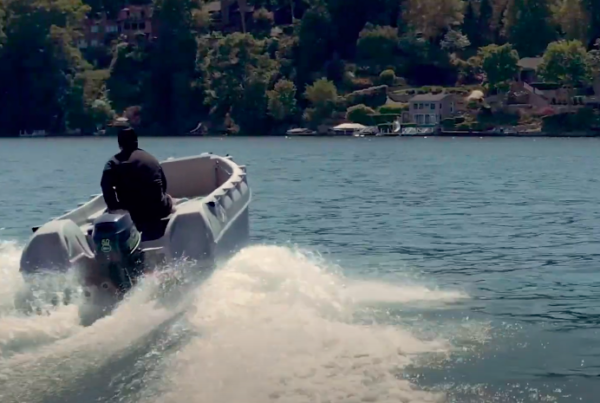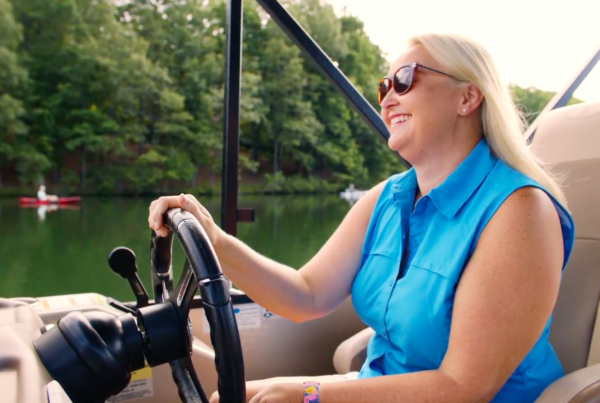
As seen in PassageMaker Magazine
First Look at Elco’s Beneteau Swift Trawler 34 Hybrid.
By GEORGE SASS SR.
Having spent more than a week running a Swift Trawler 34 from northern Michigan to St. Louis, I admit to being a fan of this small, but very capable, family cruising boat. Her single 425 hp Cummins diesel is well matched to her hull design, offering excellent fuel efficiency at 8 knots and cruising speeds of 16 to 18 knots. When conditions on Lake Michigan got snotty with wicked quartering seas, her long keel kept her on course and under control at a comfortable 14 knots.
Equally important, her helm ergonomics and interior space design are cruiser-friendly, especially for a couple—even with kids or occasional guests. Beneteau proved this point with its “Greatest Loop” promotion two years ago, handing one of its ST34s to marine journalists and photographers who successfully completed the 5,000-mile Great Loop in four months. Overall, the boat made a positive impression with these highly opinionated critics.
So when the call came from PassageMaker to evaluate a preproduction model of Beneteau’s Swift Trawler 34 Hybrid, I was curious, wondering if this attempt to join the green bandwagon would affect an already darn good boat. While I love the idea of saving the planet, I’m still a bit skeptical of the cost-effectiveness of green offerings—whether from the marine industry or the auto industry. In fact, on a personal note, instead of paying a premium for a hybrid car, we own a VW Golf Diesel TDI, which averages 43 mpg during our annual runs between Annapolis and Key West. Not bad, considering there are no heavy, expensive battery systems to deal with. During the past several years I’ve had the opportunity to evaluate a number of hybrid boats, and the early adopters certainly had their problems. The first few builders that tried combinations of diesel-electric-solar power systems often gave up on them after experiencing technical problems, poor performance and unexpected costs. Some systems were so complex it was hard to find a technician who could troubleshoot them.
The venerable Elco Motor Yacht Company, which introduced its first electric boat in 1893. Commissioned to build the electric launches for the Chicago Exposition, 55 of the company’s 38-footers transported one million visitors around Lake Michigan and the Chicago River. Today, Elco is headquartered on the Hudson River in Athens, New York, 40 miles south of Albany. Focusing on developing and manufacturing electric drive systems for commercial and pleasure boats, it not only produces a line of electric outboard motors ranging from 5 hp to 9.9 hp, it offers a line of classic electric launches from 19 to 38 feet.
Elco also works with other boatbuilders, charter companies and private owners interested in repowering their sailboats or powerboats with an electric drive system. Recently it partnered with the New York State Energy and Development Authority and the New York State Department of Transportation to repower an 86-year-old tug boat that was relaunched as an all-electric dredge tender on the Erie Canal.
In the summer of 2014 the company was nominated for Innovation of the Year at the Electric and Hybrid Marine World Expo in Amsterdam for its saildrive coupling, connecting its electric motors to Yanmar saildrives. And seeing a demand for higher power applications, it recently introduced a new EP-10000 electric motor with power comparable to a 100 hp diesel motor.
FRANCO-AMERICAN
Armed with these credentials, Elco purchased a brand-new Swift Trawler 34 to modify and use as a prototype for a diesel-electric hybrid model. Beneteau was happy to cooperate by providing engineering and design assistance, as it saw a growing interest in going green by its customers. With more than 300 Swift Trawler 34s sold and the improved reliability and affordability of hybrid technology, the company feels the time may be right to at least explore building a hybrid version of its popular cruiser.
Representatives from Elco and Beneteau recently gathered to make the prototype model available for testing and to ask for feedback from the boating press. Both companies made it clear that adding an electric drive system did not require major changes to the boat and that every effort would be made to retain its proven seagoing performance. Indeed, the ST34 Hybrid utilizes the same 425 hp Cummins diesel, transmission, shaft and prop as the standard model. In line with the shaft, a clutch-driven Elco EP-2000 electric motor delivering the equivalent of 20 hp is installed.
A total of 12 six-volt AGM batteries wired in series-parallel provide the 72-volt, 440-amp-hour source of power for the AC motor. Elco points to the higher efficiency and reliability of an AC induction motor over a DC motor, and with ratings of up to 50,000 hours the motors appear to be virtually maintenance free. Inside the motor’s casing a variable-frequency drive and inverter change the DC power to AC.
For weight balance, six batteries are installed on either side of the Cummins. The additional weight of the batteries, motor and clutch is approximately 2,000 lb., a 12-percent increase over the standard vessel. (Light-ship displacement of the standard vessel is 16,356 lb.) This is the same as having another 10 to 12 people on board, so I was anxious to compare speed and fuel efficiency numbers under diesel power with the standard model. A look at the waterline showed that the extra weight was properly distributed. To keep things simple and intuitive, the same electronic throttle and gear control is used, whether under diesel or electric power, and switching between the two is virtually instantaneous. A temporary digital display showing current draw, rpm and hours-to-go was installed overhead. Elco says this would be replaced in the production model by having the data displayed on an iPad via Bluetooth. However, those aboard for this test overwhelmingly agreed that the overhead display should stay, as it provides invaluable info at a glance.
RUN SILENT, RUN CHEAP?
Leaving the dock under electric power can be a real hoot, as bystanders invariably stare and wonder why they don’t hear the throaty rumble of a combustion motor. Even being at the helm is a bit disconcerting at first, as we are so conditioned to the cause and effect of motornoise and movement. Thanks to the Swift Trawler’s handy bow and stern thrusters we were soon out of our tight slip and on our way for a very quiet run in Annapolis Harbor. Harbor cruises, in fact, are where hybrid boats shine, as the speed limits are usually in line with the hybrid’s capability.
While we ran silently at 4.4 knots, our instruments showed that we could continue at this speed for about three hours. The standard Swift Trawler 34 is equipped with a 7.5 kW generator, and according to the Elco engineers, firing it up would give us another nine hours or so of running time, as it will help keep the batteries charged. At wide-open throttle we hit 4.7 knots with seven people on board and with half-full fuel and water tanks. Watching the current draw as we varied speed was fascinating, as it reacted in similar fashion to a fuel-flow meter.
An increase in speed of 28 percent from 2.8 knots to 3.6 knots required 44 percent more electrical current from 38 amps to 55 amps. A 22 percent increase in speed from 3.6 knots to 4.4 knots required a 73 percent increase in current from 55 amps to 95 amps. So, whether under diesel or battery power, it always pays to slow down.
While these numbers seemed reasonable and showed no surprises, I was frankly more interested in the boat’s performance under diesel power. While it’s not easy comparing apples to apples in the marine environment because of so many variables, the accompanying chart shows there is a price to be paid for carrying around this extra weight. To be fair, the Swift Trawler I ran on the Great Loop route had only two people on board, compared to seven on the Hybrid. Fuel and water levels were roughly the same.
But during the Great Loop trip, the non-hybrid boat probably carried another 400 to 500 lb. of cruising gear, food and supplies. Some quick math says that for these tests, the Hybrid’s weight difference was about 2,400 lb. more than the non-hybrid, of which 2,000 lb. were attributable to the electric power system. As shown, this additional weight appears to have had a measurable affect on the boat’s performance, although it’s not entirely clear if the prop was in perfect condition during these tests.
A month after these tests were run, Beneteau hauled the boat and reported that two blades of the prop showed some damage. Adding to the uncertainty of this comparison, if everything else is equal, the speed and fuel efficiency running in salt water should be slightly better than when running in fresh water. The numbers for the standard boat were recorded in fresh water and the hybrid in salt water.
I would suspect, however, that tweaks can be made to the Hybrid model that will restore much of the boat’s original performance, and I would start with the prop. Finding ways to save weight would certainly help, as well.
GREEN COSTS?
On a retail level, the cost of the 12 AGM batteries alone is about $7,200, and Elco claims they have a life cycle of five to eight years under normal use. If this hybrid version goes into production, Beneteau estimates that the green option will add roughly 10 percent to the price of the boat. Since a new, fully equipped Swift Trawler 34 sells for $400,000, or so, that’s about a $40,000 premium.
Now let’s take a closer look at cost effectiveness. Running 5.7 knots under diesel at 1000 rpm, the non-hybrid burns one gallon per hour, achieving a very respectable 5.7 nautical miles per gallon and a range of more than 1,000 nm. As an aside, at this speed (which is a knot faster than the hybrid’s top speed under electric power) the sound level at the helm is an ultra-quiet 62 dB(A). Assuming diesel fuel costs $5 per gallon, we would have to run 8,000 hours, or more than 45,000 nm, to break even with a $40,000 green premium. Double the price of diesel fuel, and you would still have to run the boat in the electric mode for 4,000 hours to break even.
Considering most boaters run their boats about 100 hours a year (although rarely at 4 knots), that’s 40 years of catching up, even with a fuel-cost assumption of $10 per gallon. Consequently, it’s hard to accept the argument that someone would buy this hybrid to save on fuel costs.
GET-HOME REDUNDANCY
In the case of this capable single-motor Swift Trawler 34, the electric option is a terrific “get-home” package. Based on the boat’s superb hull design and seaworthiness, I would not hesitate to take her offshore to the most remote cruising grounds. But also based on hard-earned experiences of cruising off the beaten path, I learned to favor the redundancy of twin motors or at least be able to rely on some type of get-home power. This is where the Elco/Beneteau shines.
Even if this hull had room for twins, the cost of another diesel motor and running gear would be higher than the proposed green option. Chances are, as long as the shaft and prop weren’t severely damaged (they are protected by a long keel), the Elco electric-drive system would be able to get the boat back to a safe harbor. If the AC generator wasn’t permanently disabled because of bad fuel, the boat could run almost indefinitely at a little under 4 knots—or until the diesel fuel ran out. (I know there are those who argue that almost all diesel-motor failures are fuel related, but they do so without hard evidence, and I experienced two breakdowns with my single CAT 3208 that were not fuel related.)
So, looking at this system primarily as a get-home package, is it worth $40,000? First, I’d like to see if enough tweaks could be made to achieve the boat’s original performance. These may be as simple as changing the prop and losing some weight. If its speed and fuel efficiency can get close to the non-hybrid version, then the question becomes how does one intend to use the boat. If the owner is going to be near boating centers with towing facilities, there’s little need for redundancy.
The non-hybrid “Greatest Loop” ST34 ran over 5,000 hard miles without its Cummins diesel ever skipping a beat. I certainly wouldn’t worry about taking it to the Bahamas. But if I were planning to venture beyond the Exumas or explore far up the Inside Passage, I might rationalize spending $40,000 for the peace of mind of having the Elco system on board. Perhaps I could even rationalize that I was helping save the planet while cruising silently at 4 knots.
Whatever the outcome of future tests and Beneteau’s decision of whether to build this hybrid, I applaud the measured, cautious approach that Elco and Beneteau have taken. I’ve seen builders in the past that have rushed new, unproven models to market only to have dealers and customers pay the ultimate price of their failed technology. In the meantime, the Swift Trawler 34 is a very capable boat with a proven record for safe, comfortable cruising.




